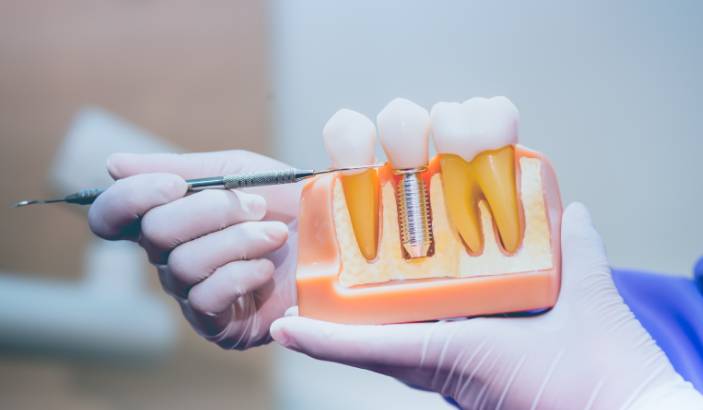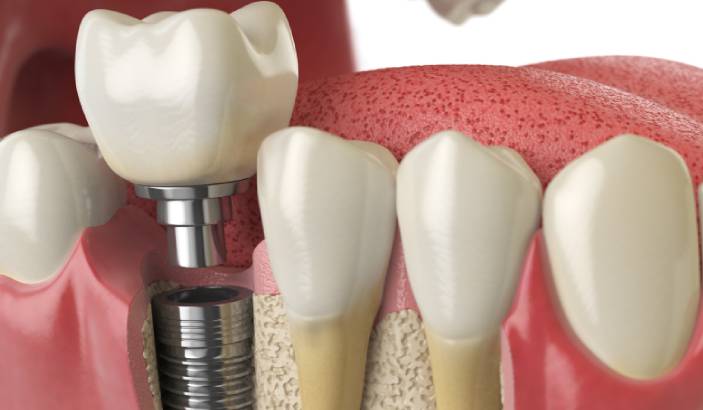Smiling can be one of life’s simplest joys. But for those with missing teeth, it can also be one of life’s greatest challenges. Not only do they affect appearance, but they also cause a host of other health and lifestyle issues.
Thankfully, modern dentistry has developed innovative solutions—one of the most effective being dental implants. These small yet powerful devices serve as the foundation for replacement teeth, recreating the natural tooth’s appearance and functionality.
Dental implants integrate with the jawbone, providing stable support for artificial teeth. They’re one of the best solutions to restoring your natural teeth.
Understanding the process is crucial for those seeking durable and long-lasting dental implants. After all, it’s more than just a dental procedure—it’s a journey that brings back not just your smile but also your confidence and quality of life.
Let’s delve into this easy-to-follow guide on the dental implant process.
Step 1: Initial Assessment And Planning
The process begins with an initial assessment and planning. This phase is vital, as it sets the stage for the entire process. Here’s what you can expect during this step:
- Dental Examination: Your dentist will conduct an oral examination. This includes checking the condition of your gums, teeth, and jawbone. They’ll also take X-rays and 3D images of your mouth to better understand your dental structure.
- Discussion Of Preferences: The dentist will discuss your preferences, including the type of artificial teeth you prefer—removable, fixed, or a combination of both. This is to ensure the result aligns with your expectations.
- Custom Treatment Plan: Once your dentist gathers all the necessary information, they’ll create a custom treatment plan tailored to your needs. This will outline the procedure, estimated timeline, and cost.
Remember, you’re an active participant in this stage. Don’t hesitate to ask questions or express your concerns. The more informed you are, the more comfortable you’ll feel throughout the dental implant process.
Step 2: The Implant Placement Procedure
The implant placement procedure is where the titanium root of the artificial tooth is surgically placed into your jawbone. Here’s the breakdown of this crucial step:
- Applying Anesthesia: First, the dentist will administer local anesthesia to numb the area where the implant will be placed. This ensures you’re comfortable and pain-free during the procedure.
- Making An Incision: Once the area is numb, the dentist will create a small incision in the gum tissue to expose the bone where the dental implant will be inserted.
- Drilling Into The Bone: Once exposed, the dentist will drill a hole into the bone.
- Placing The Implant: The dentist carefully places the titanium implant into the drilled hole. This will serve as an artificial root for your new tooth.
- Closing The Incision: After placing the implant, the dentist stitches the incision in the gum. This helps promote healing and protect the implant.
The placement procedure might sound a bit daunting, but with modern techniques and anesthesia, it’s generally straightforward and mostly pain-free.
Step 3: Healing And Osseointegration
Osseointegration refers to the bonding of the implant with your jawbone. It’s a crucial step that ensures the implant’s stability and durability. Here’s what happens during this phase:
- Initial Healing: During the first few days after the implant placement, your gums will start to heal. This phase is usually accompanied by discomfort, swelling, and minor bleeding.
- Osseointegration Begins: After the healing phase, the osseointegration stage begins. This is when the jawbone starts to grow around the implant, essentially fusing the bone with the titanium implant.
While you’re waiting for osseointegration to complete, it’s essential to maintain good oral hygiene and follow your dentist’s instructions. Taking care of your mouth will help ensure a successful and smooth dental implant process.
Step 4: Placing The Abutment And Artificial Tooth
Once the osseointegration phase is complete and the dental implant is fully integrated into the jawbone, the dentist will place the abutment and the artificial tooth. Let’s break down this process:
- Placing Abutment: The dentist attaches a small connector post (an abutment) to the dental implant. This acts as a bridge between the implant and the artificial tooth.
- Creating Artificial Tooth: Using the impression, a dental lab creates your custom artificial tooth. This process ensures the new tooth fits perfectly and looks natural in your mouth.
- Placing Artificial Tooth: Once the artificial tooth is ready, the dentist will connect it to the abutment. This completes the dental implant process.
Although this stage marks the end of the implant process, your journey with your new, durable, and long-lasting dental implant has just started. Maintaining good oral hygiene habits and regular dental check-ups will help promote the longevity and health of your new smile.
Final Words
Every patient’s journey to a healthy and complete smile is unique. Although the specific needs and preferences may vary, one thing remains constant—dental implants offer a durable, long-lasting solution to missing teeth. Remember, just like natural teeth, dental implants need care. Brush twice a day, floss daily, and keep up with dental appointments. Here’s to a healthier, brighter smile!









